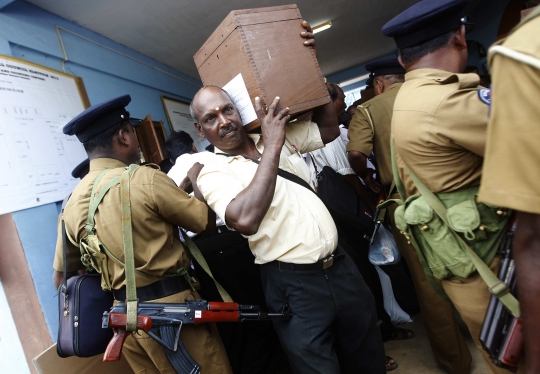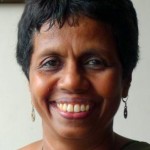The Ideal V. Practical In Electoral Reforms

By Sujata Gamage -March 31, 2015
Electoral reform logjam broke loose when MPs agreed to an increase to the size of the parliament from 225 to 250. The idealists are up in arms. What is the ideal size of the parliament? What is the ideal mix of representation? They are asking now. These are good questions, but, unfortunately that bus left long ago, as far back as 2007.
The Parliamentary Select Committee on Electoral Reforms was constituted in 2003 and they issued their Interim report in 2007. Interestingly the final report was never published, but, I have posted a scanned copy on my personal Web site. If anybody bothers to read the document, it shows the committee grappling with difficult questions. For example, there is a dissenting opinion by the Sri Lanka Muslim Congress and Ceylon Workers Congress where they challenge the report extensively but offer constructive suggestions at the end.
In trying to meet multiple demands something has to yield. If it takes an increase to bring about changes, it is worthy increase I think. The number 250 need not be a done deal either. A delimitation commission can be given a charge to consider the other alternatives such as 235, 240 and 245. We can also ask the question what can be done with 250 do that cannot be done with 245 and so on. Those are little questions indeed.
 We do need people who can look at the bigger picture. Do we want a soviet like government where for example, local councils would be smaller and closer to the communities and the chair and vice chair from each represent the communities in the provincial councils. The parliament would be small. It would leave local issues to local governments and provincial issues to provincial governments. Nice theory, but, has anybody thought of the political and policy tools through which we achieve such? If other countries achieved such significant changes how did they do it? How did we achieve big changes in the past? If anybody wants big changes , I suggest they use their time to do the research and prepare for the big policy moment which may strike.
We do need people who can look at the bigger picture. Do we want a soviet like government where for example, local councils would be smaller and closer to the communities and the chair and vice chair from each represent the communities in the provincial councils. The parliament would be small. It would leave local issues to local governments and provincial issues to provincial governments. Nice theory, but, has anybody thought of the political and policy tools through which we achieve such? If other countries achieved such significant changes how did they do it? How did we achieve big changes in the past? If anybody wants big changes , I suggest they use their time to do the research and prepare for the big policy moment which may strike.
We did have big policy moment in our country when we changed from a majoritarian FPP system of elections to a PR system in 1978. We are now getting ready to move into in a mixed system of the two, and it is a given, politically. It is not a bad move either. The world is moving from majoritarian systems or PR systems to mixes of the two.
Is this a time for anything bigger? I doubt it. We are more than three-quarters way through our policy window of 100 days. It is not a time for big policy thinking. Our focus would be indeed to do the little tweaks to changes that have been on the agenda for years. Two particular tweaks come to mind.
How much FPP and how much PR?
Those who talk about 50:50 solution do not ask a key question. What if 50 people from one party contest in 50 electorates in a FPP system and other 50 come from a PR of the votes cast, where are you going to find the people to fill those 50 PR seats? Which question leads us to our next tweak opportunity.
Who will fill the PR seats?
The obvious answer is a list submitted the by the party. That is indeed the norm in mixed methods or 100% PR systems. However, in Sri Lanka we have had disastrous results with elections to District Development Councils in 1982 where the lists were stuffed with friend and family. Have we grown up as a country since then? I doubt it. Awarding PR seats to the best runners-up as from FPP races in proportion to the votes garnered by them as proposed in in the 2007 report of the Parliamentary Select Committee (PSC) on Electoral Reforms is still the best alternative.
Innovations through tweaking
Innovations do not come not from arm-chair theorizing but trying to tweak within limitations. Tired of the debate over how much FPP or how much PR we asked ourselves why not use 100% PR, more or less, to decide how many seats each party is getting. Then use the FPP winners and the best runners-up to fill the seats. WE call this this system PSC-NZ combination because the first part comes from New Zealand and the second part from the PSC. More on the PSC-NZ method later.
